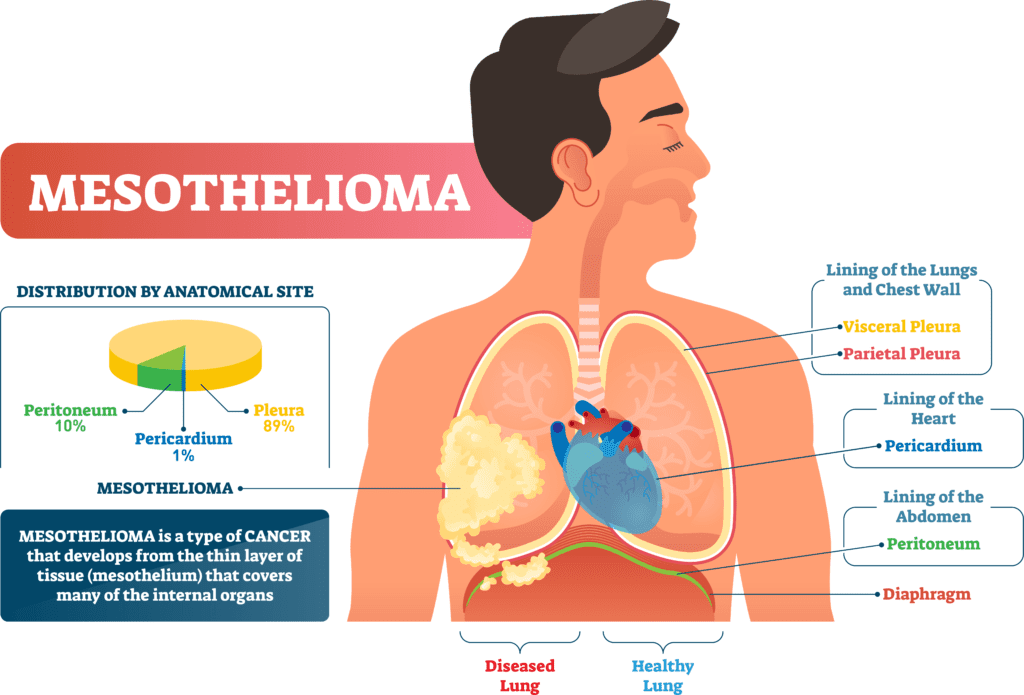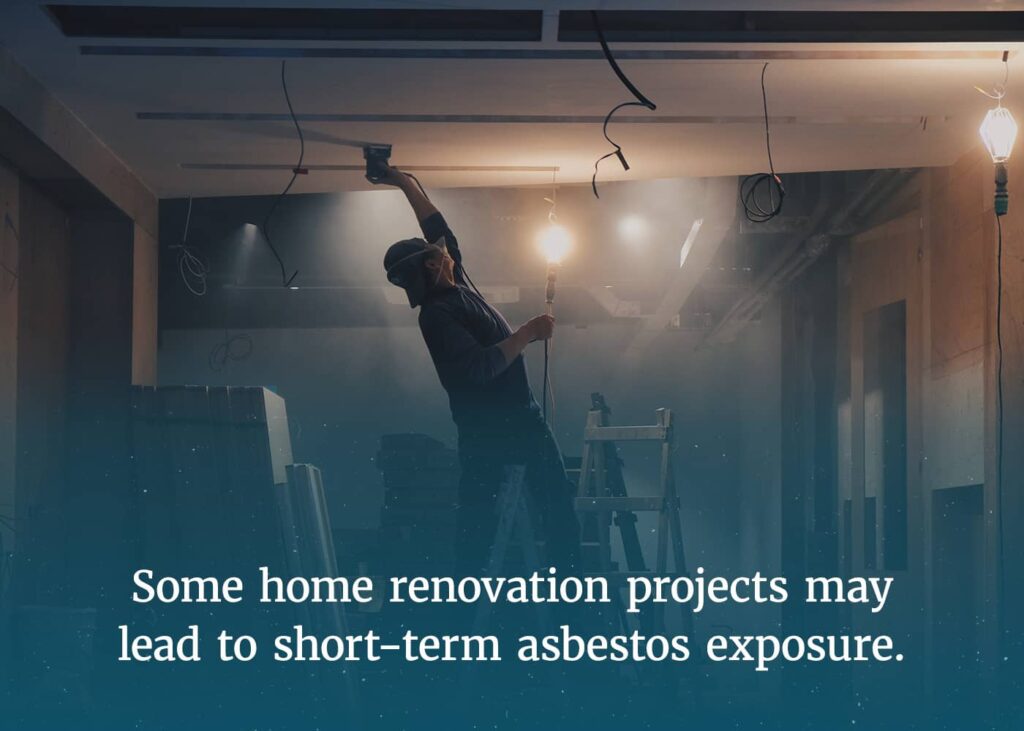Imagine the profound impact a single encounter with a harmful substance can have on your health. In the case of asbestos, a question lingers in the minds of many: can a solitary exposure to this hazardous material actually lead to the development of the devastating cancer known as mesothelioma? As we navigate through the intricate web of medical research and uncover the truth, you will gain a deeper understanding of the potential consequences that a fleeting interaction with asbestos can bring. Brace yourself for an eye-opening exploration into the connection between asbestos exposure and the development of mesothelioma.
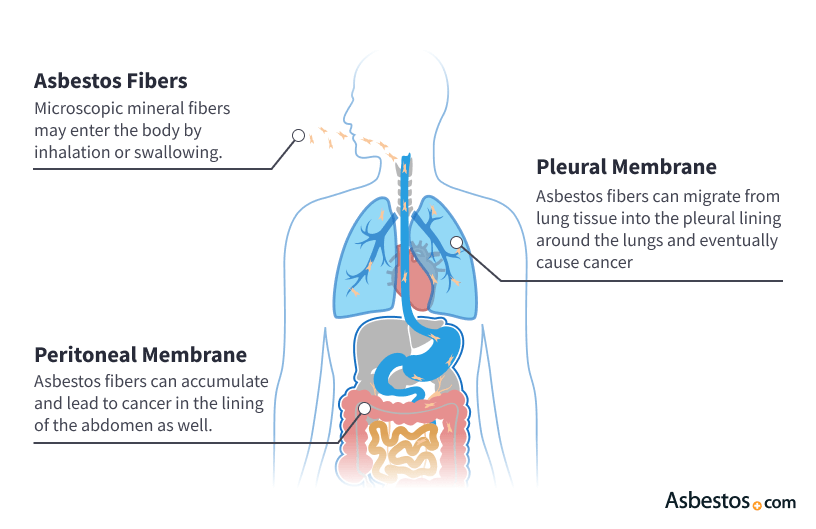

What is Asbestos?
Definition of asbestos
Asbestos refers to a group of naturally occurring minerals that have been widely used in various industries due to their heat resistance and durability. It is composed of microscopic fibers that can be easily inhaled or ingested.
Types of asbestos
There are six different types of asbestos minerals, which can be classified into two categories: serpentine and amphibole. Chrysotile, a serpentine mineral, is the most commonly used type of asbestos. Amphibole minerals include amosite, tremolite, crocidolite, actinolite, and anthophyllite. Each type of asbestos has its unique characteristics and potential health risks.
What is Mesothelioma?
Definition of mesothelioma
Mesothelioma is a rare form of cancer that primarily affects the lining of the lungs, abdomen, or heart. It is caused by the inhalation or ingestion of asbestos fibers. The disease has a long latency period, with symptoms usually appearing 20 to 50 years after exposure to asbestos.
Causes of mesothelioma
Asbestos exposure is the major cause of mesothelioma. When asbestos fibers are inhaled or ingested, they can become lodged in the lining of the lungs, abdomen, or heart. Over time, these fibers can cause inflammation and genetic damage, leading to the development of mesothelioma. Other factors, such as genetic predisposition and exposure to certain chemicals, may also play a role in the development of the disease.
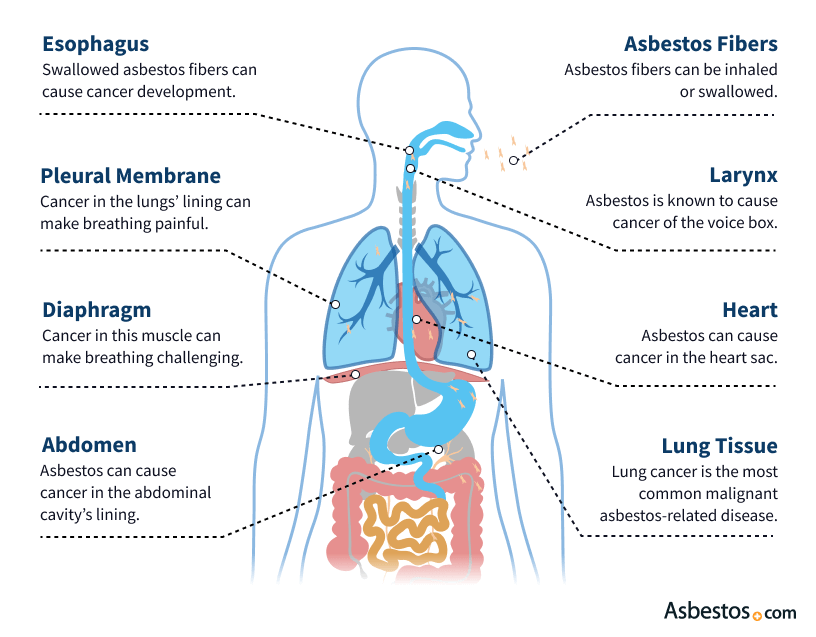

Understanding Asbestos Exposure
Routes of asbestos exposure
Asbestos exposure can occur through various routes. Inhalation is the most common route, with individuals breathing in asbestos fibers released into the air. Ingestion can occur when people unknowingly swallow asbestos fibers present in contaminated food or water. Additionally, asbestos fibers can be directly deposited on the skin, leading to dermal exposure.
Duration and intensity of asbestos exposure
The duration and intensity of asbestos exposure are crucial factors in determining the risk of developing mesothelioma. Prolonged exposure to high levels of asbestos increases the likelihood of developing the disease. However, it is important to note that even a single exposure to asbestos fibers can potentially lead to mesothelioma, as the fibers can cause long-term damage.
Case Studies and Research
Study 1: Single Exposure to Asbestos and Mesothelioma
A study conducted by researchers examined individuals who experienced a single, albeit significant, exposure to asbestos. The findings revealed that even a single exposure to asbestos fibers could result in the development of mesothelioma. This study emphasizes the importance of recognizing the potential risks associated with any level of asbestos exposure.
Study 2: Other Factors Influencing Mesothelioma Development
Another study investigated the combined effects of asbestos exposure and other factors contributing to mesothelioma development. The research findings indicated that while additional factors, such as genetics and exposure to certain chemicals, may increase the risk of developing mesothelioma, asbestos exposure remains a significant contributor to the disease.
Study 3: Long-term Effects of Single Asbestos Exposure
A long-term study monitored individuals who experienced a single asbestos exposure and assessed their health outcomes over several decades. The study observed that even after a considerable period, the risk of developing mesothelioma remained elevated among those exposed to asbestos. This underscores the long-lasting impact of asbestos exposure on health.
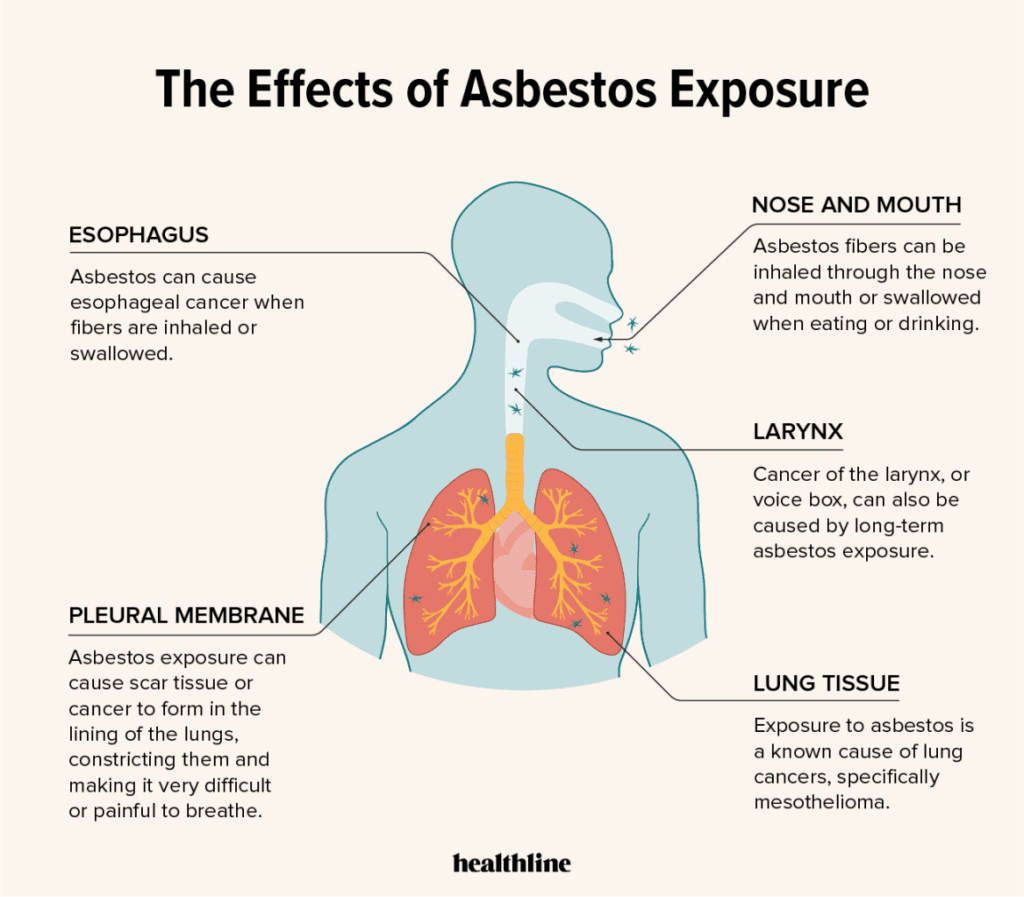

Common Arguments and Counterarguments
Argument: One-time exposure cannot cause mesothelioma
Some argue that a single exposure to asbestos is not sufficient to cause mesothelioma. They contend that prolonged, high-level exposure is necessary to develop the disease. However, research suggests that even a single exposure to asbestos fibers can lead to mesothelioma, although the risk may be lower compared to long-term exposure.
Counterargument: Cumulative effects over time
Counterarguments highlight the cumulative effects of asbestos exposure over time. Although a single exposure may not trigger immediate symptoms, the presence of asbestos fibers within the body can cause chronic inflammation and genetic damage, eventually leading to the development of mesothelioma years or decades later.
Argument: Other known factors contribute more to mesothelioma development
Skeptics argue that other factors, such as genetic predisposition or exposure to specific chemicals, play a more significant role in the development of mesothelioma compared to asbestos exposure alone. While these factors may contribute to an individual’s susceptibility, numerous studies consistently emphasize the substantial impact of asbestos exposure on mesothelioma development.
Counterargument: The significance of asbestos exposure
Counterarguments emphasize the significance of asbestos exposure as a primary cause of mesothelioma. Large-scale epidemiological studies have consistently demonstrated a strong association between asbestos exposure and the development of mesothelioma, establishing a clear link between the two.
Legal Implications and Compensation
Legal cases regarding single asbestos exposure
Legal cases related to single asbestos exposure have garnered attention in recent years. While some argue that proving the link between a single exposure event and mesothelioma can be challenging, successful lawsuits have resulted in compensation for victims and their families. These cases highlight the responsibility of employers and manufacturers in ensuring workplace safety.
Compensation for mesothelioma victims
Victims of mesothelioma caused by asbestos exposure may be eligible for compensation through legal avenues. Compensation can help cover medical expenses, loss of income, and provide assistance to those affected by the disease. Legal guidance can provide the necessary support for victims and their families to seek rightful compensation.


Preventing Asbestos Exposure
Regulation and management of asbestos
To prevent asbestos-related diseases, strict regulations and guidelines have been implemented in many countries. These regulations focus on the safe handling, removal, and disposal of asbestos-containing materials. Proper abatement procedures and regular inspections help minimize the risk of exposure in workplaces and other environments.
Protective measures and equipment
Personal protective equipment (PPE) plays a crucial role in minimizing asbestos exposure. Workers involved in asbestos-related tasks must wear protective clothing, gloves, masks, and respiratory devices to prevent inhalation or dermal contact. Regular training and awareness programs also help educate individuals about the risks associated with asbestos exposure and the necessary precautions to take.
Occupational Safety and Precautions
Occupational asbestos exposure risks
Certain occupations pose a higher risk of asbestos exposure due to the nature of the work involved. Industries such as construction, manufacturing, shipbuilding, and automotive repair often involve activities that may disturb asbestos-containing materials. Workers in these industries must adhere to strict safety protocols to minimize their exposure and protect their health.
Workplace safety protocols
Employers have a responsibility to ensure a safe working environment and protect employees from asbestos exposure. Implementing comprehensive safety protocols, conducting risk assessments, providing proper training, and enforcing the use of protective equipment are crucial steps in safeguarding workers’ health. Regular monitoring and inspections help maintain compliance with safety regulations.
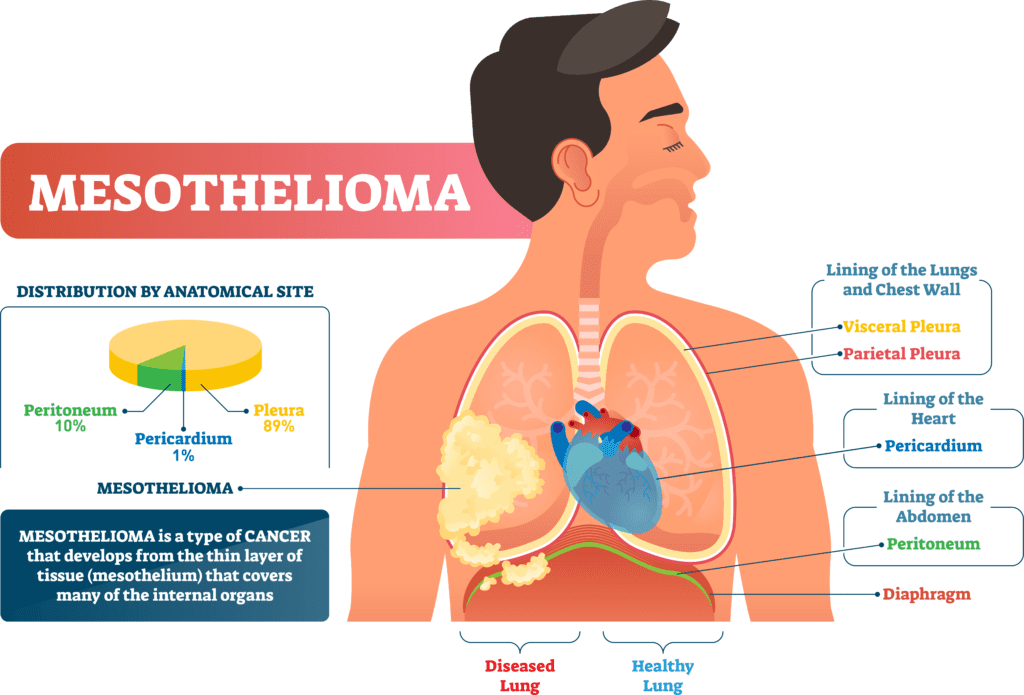

Secondary Asbestos Exposure
Risks of secondary asbestos exposure
Secondary asbestos exposure refers to individuals who are indirectly exposed to asbestos fibers through contact with contaminated surfaces, clothing, or individuals who have been in direct contact with asbestos. Family members of workers exposed to asbestos, such as spouses or children, may be at risk of secondary exposure. This can occur when asbestos fibers are brought home on work clothes or through close personal contact.
Preventing secondary exposure
Measures can be taken to prevent secondary asbestos exposure. Employees working with asbestos should change their clothes and shower before leaving the workplace to minimize the risk of carrying asbestos fibers home. Laundering work clothes separately and properly disposing of contaminated materials can also help prevent secondary exposure.
Key Takeaways
Understanding the relationship between asbestos exposure and mesothelioma
Asbestos exposure has been firmly established as a significant cause of mesothelioma. Whether through a single exposure or prolonged exposure, asbestos fibers can cause chronic inflammation and genetic damage, leading to the development of this rare form of cancer.
Importance of asbestos regulation and safety measures
The regulation, management, and safe handling of asbestos are crucial for safeguarding individuals from its harmful effects. Strict adherence to safety protocols in occupational settings, as well as proper disposal and abatement procedures, are essential in protecting workers and the general population from asbestos exposure.

